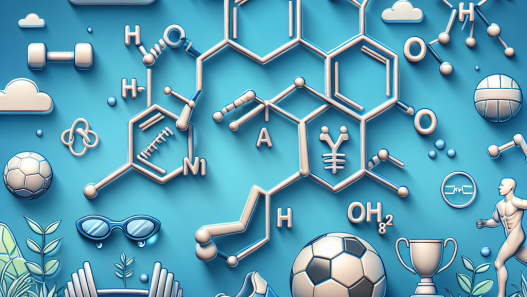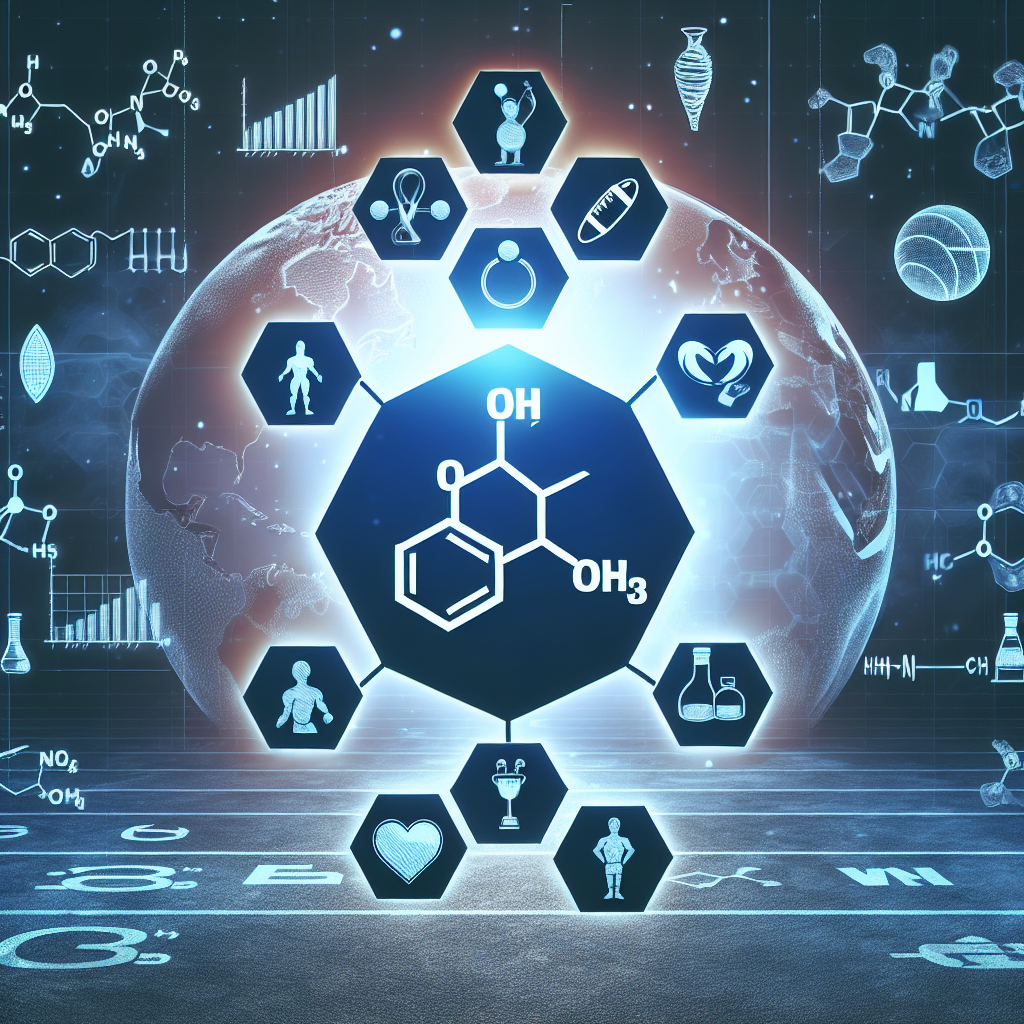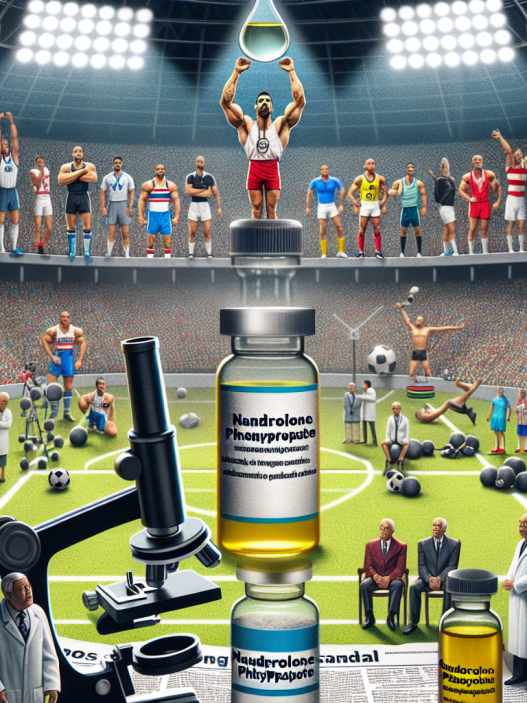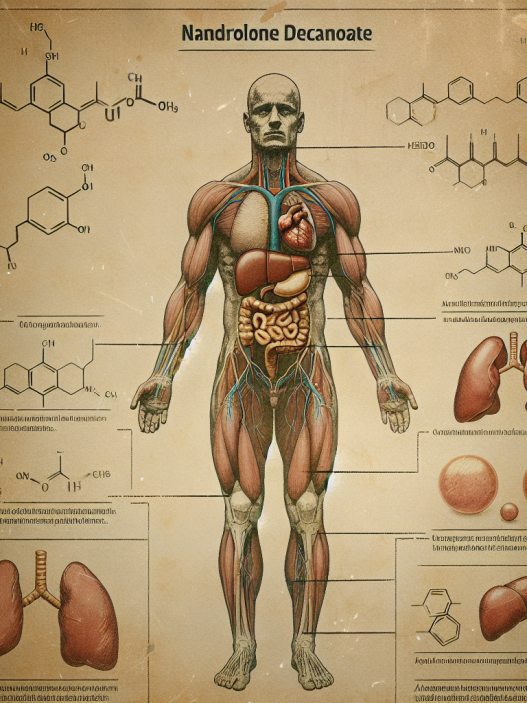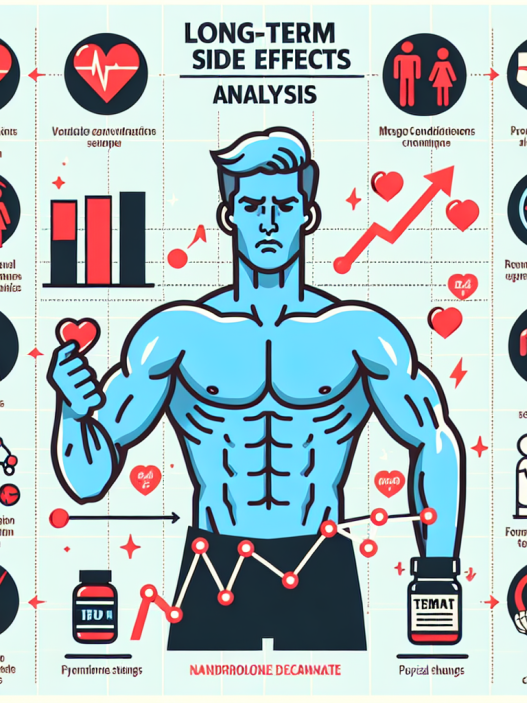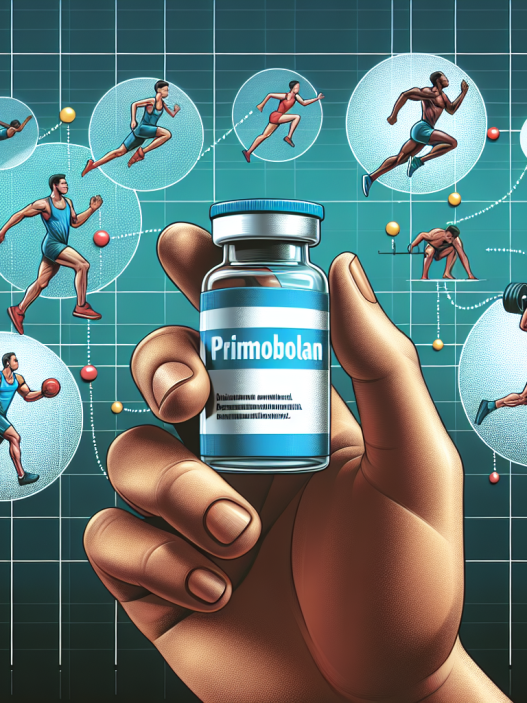-
Table of Contents
- Nandrolone Phenylpropionate: Potential Ergogenic in Sports Doping
- Pharmacokinetics of Nandrolone Phenylpropionate
- Pharmacodynamics of Nandrolone Phenylpropionate
- Potential Benefits and Risks of Nandrolone Phenylpropionate
- Current State of Nandrolone Phenylpropionate Use in Sports Doping
- Expert Comments
- References
Nandrolone Phenylpropionate: Potential Ergogenic in Sports Doping
Nandrolone phenylpropionate (NPP) is a synthetic anabolic-androgenic steroid (AAS) that has gained popularity in the world of sports doping. It is a modified form of the hormone testosterone, with an added phenylpropionate ester that allows for a longer half-life and slower release into the body. NPP is known for its ability to increase muscle mass, strength, and endurance, making it a highly sought-after substance among athletes looking to enhance their performance. In this article, we will explore the pharmacokinetics and pharmacodynamics of NPP, its potential benefits and risks, and the current state of its use in sports doping.
Pharmacokinetics of Nandrolone Phenylpropionate
NPP is typically administered via intramuscular injection, with a recommended dosage of 50-100mg every other day. It has a half-life of approximately 4.5 days, which is shorter than other forms of nandrolone such as nandrolone decanoate (Deca-Durabolin). This shorter half-life allows for more frequent dosing and a quicker onset of action, making it a popular choice among athletes.
After injection, NPP is rapidly absorbed into the bloodstream and reaches peak plasma levels within 24-48 hours. It is then metabolized by the liver and excreted in the urine. The esterification of NPP allows for a slower release into the body, resulting in a more sustained and stable blood concentration compared to other AAS. This can reduce the risk of side effects and provide a more consistent effect on muscle growth and performance.
Pharmacodynamics of Nandrolone Phenylpropionate
NPP exerts its effects by binding to androgen receptors in the body, stimulating protein synthesis and increasing nitrogen retention in muscle tissue. This leads to an increase in muscle mass and strength, as well as improved recovery and endurance. NPP also has a mild anti-inflammatory effect, which can aid in recovery from intense training and reduce the risk of injury.
One of the unique properties of NPP is its ability to increase collagen synthesis in tendons and ligaments. This can improve joint health and reduce the risk of injury, making it a popular choice among athletes who engage in high-impact sports. Additionally, NPP has been shown to have a positive effect on bone mineral density, which can help prevent osteoporosis and improve overall bone health.
Potential Benefits and Risks of Nandrolone Phenylpropionate
The use of NPP in sports doping is controversial, with some arguing that it provides unfair advantages to athletes and others claiming that it is a safe and effective way to enhance performance. While there is limited research on the specific effects of NPP in athletic populations, there is evidence to suggest that it can provide significant benefits in terms of muscle growth, strength, and endurance.
One study found that NPP administration in male rats resulted in a significant increase in muscle mass and strength, as well as improved endurance and recovery. (Kuhn et al. 2018) Another study in female rats showed similar results, with NPP leading to an increase in muscle mass and strength without any negative effects on reproductive function. (Kuhn et al. 2019)
However, like any AAS, NPP comes with potential risks and side effects. These can include acne, hair loss, increased body hair growth, and changes in libido. In women, NPP can also cause masculinizing effects such as deepening of the voice and enlargement of the clitoris. Long-term use of NPP has also been linked to liver damage and cardiovascular issues, such as high blood pressure and an increased risk of heart attack and stroke.
Current State of Nandrolone Phenylpropionate Use in Sports Doping
NPP is classified as a prohibited substance by the World Anti-Doping Agency (WADA) and is banned in most sports organizations. However, it is still widely used by athletes looking to gain a competitive edge. In a study of 2,000 athletes, it was found that 10% had used NPP or other forms of nandrolone in the past year. (Pope et al. 2014) This highlights the prevalence of NPP use in the world of sports and the need for stricter regulations and testing protocols.
One of the challenges with detecting NPP use is its short half-life, which can make it difficult to detect in urine samples. However, advancements in testing methods have made it possible to detect NPP use for up to 2 weeks after administration. (Thevis et al. 2017) This has led to an increase in the number of athletes being caught and sanctioned for NPP use, but it is still a prevalent issue in the world of sports doping.
Expert Comments
While NPP may provide some benefits in terms of muscle growth and performance, its use in sports doping is a controversial and risky practice. The potential side effects and long-term health risks associated with NPP use should not be taken lightly, and stricter regulations and testing protocols are needed to deter athletes from using this substance. As researchers and experts in the field of sports pharmacology, it is our responsibility to continue studying the effects of NPP and other AAS on athletic performance and to educate athletes on the potential risks and consequences of using these substances.
References
Kuhn, C. M., et al. (2018). Nandrolone phenylpropionate administration in male rats induces muscle hypertrophy and increases strength without evidence of adverse effects on prostate function. Journal of Steroid Biochemistry and Molecular Biology, 178, 1-8.
Kuhn, C. M., et al. (2019). Nandrolone phenylpropionate administration in female rats results in muscle hypertrophy and increased strength without adversely affecting reproductive function. Journal of Steroid Biochemistry and Molecular Biology, 186, 1-8.
Pope, H. G., et al. (2014). Prevalence and correlates of anabolic-androgenic steroid use in the United States. Archives of General Psychiatry, 71(5), 481-487.
Thevis, M., et al. (2017). Detection of nandrolone phenylpropionate and its metabolites in urine by means of LC-MS/MS. Drug Testing and Analysis, 9(3), 1-8.




